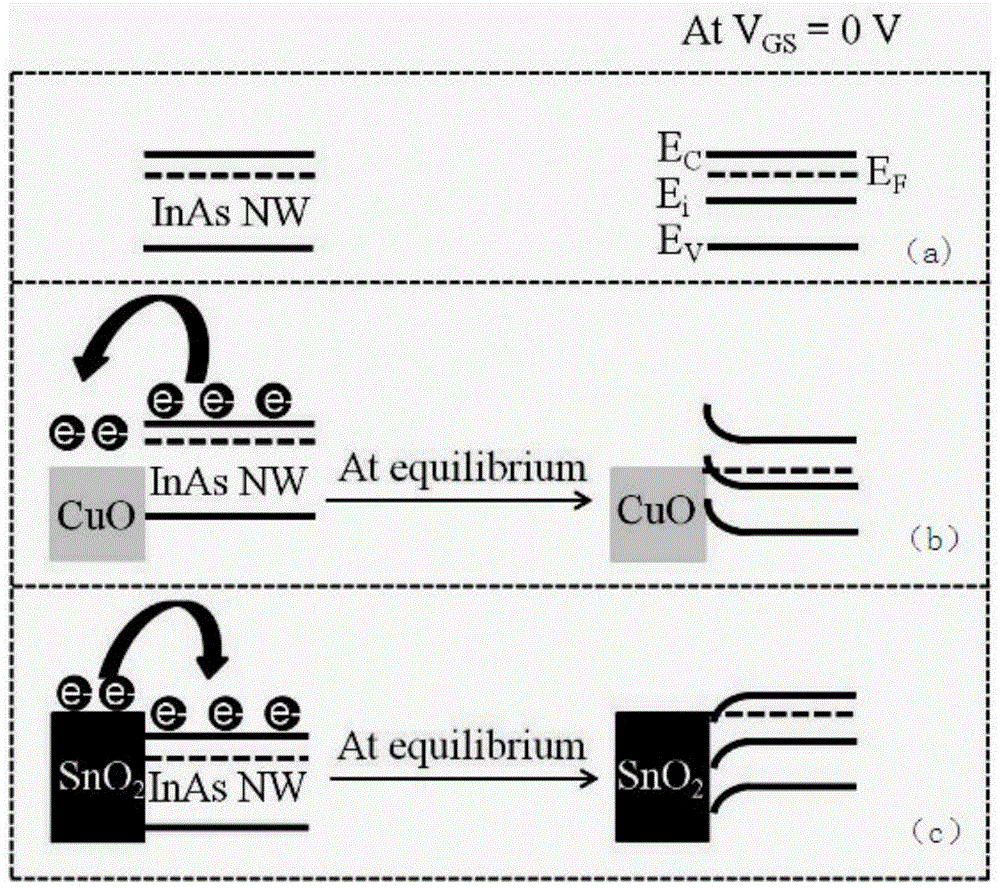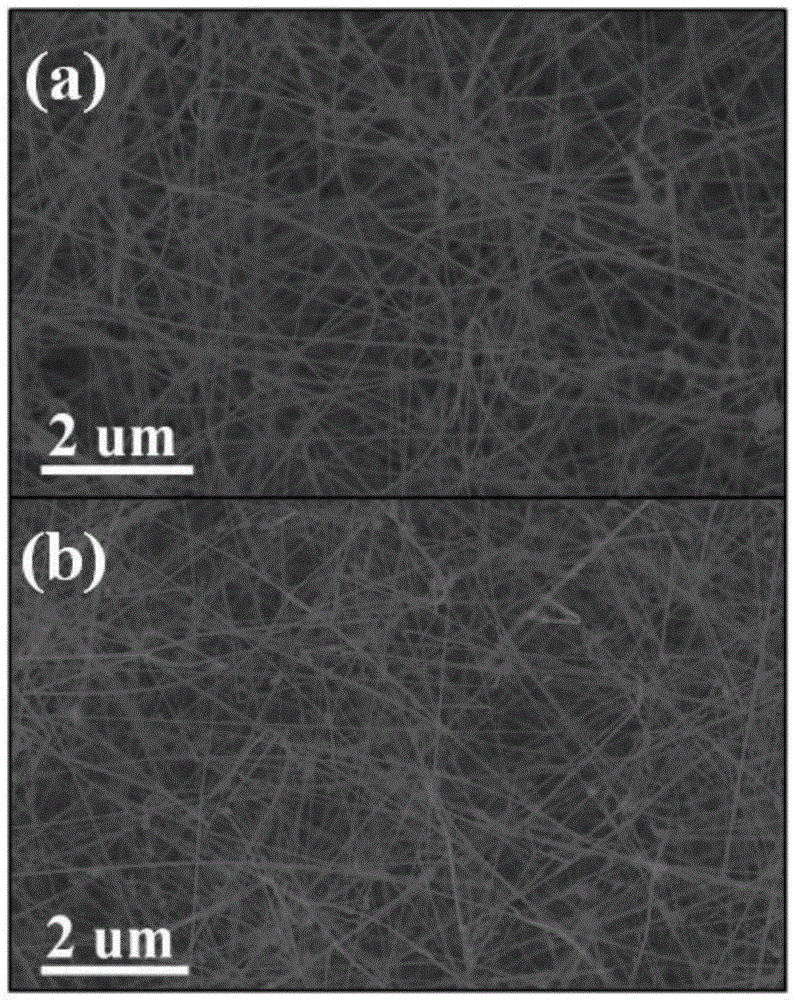Method for regulating and controlling threshold voltage of semiconductor nanowire field effect transistor
A field-effect transistor and threshold voltage technology, applied in semiconductor devices, semiconductor/solid-state device manufacturing, circuits, etc., can solve the problem of reducing the carrier density in nanowires, and achieve easy large-scale industrial production, reliable principle, and operation easy effect
- Summary
- Abstract
- Description
- Claims
- Application Information
AI Technical Summary
Problems solved by technology
Method used
Image
Examples
Embodiment 1
[0036] The specific process steps for regulating the threshold voltage of the semiconductor NWFET in this embodiment are:
[0037] (1) First, disperse the prepared InAs nanowires in absolute ethanol, and ultrasonically disperse them evenly;
[0038] (2) Disperse one-dimensional semiconductor nanomaterials on the surface to cover 50nm SiO by low drop coating method 2 On the p-type heavily doped silicon wafer of the dielectric layer;
[0039] (3) Prepare photoresist patterns of source and drain electrodes on the p-type heavily doped silicon wafer obtained in step (2) by photolithography, evaporate and deposit 80nmNi film as source and drain electrodes by thermal evaporation, and then lift off the metal by metal stripping The process removes unnecessary photoresist and metal film, and completes the preparation of the back gate InAsNWFET;
[0040] (4) A 0.5nm Cu film was evaporated on the prepared back-gate InAsNWFET by thermal evaporation, and then annealed at a low temperature...
Embodiment 2
[0042] In the present embodiment, the deposition thickness of the Cu film is 0.2nm, and other experimental conditions are the same as in Example 1. The experiment shows that the CuO nanoparticles formed by the 0.2nm thick Cu film can move the threshold voltage of a single InAsNWFET towards the positive voltage direction, Figure 6 a is the transfer curve of a single InAsNWFET before and after modification with CuO nanoparticles formed by a 0.2nm thick Cu film, indicating that the CuO nanoparticles formed by a 0.2nm Cu film can successfully transform the threshold value of a single nanowire diameter ~ 30nm InAsNWFET The voltage moves ~2.1V to the positive voltage direction; the threshold voltage of the modified NWFET is ~0V, becoming an enhanced InAs NWFET.
Embodiment 3
[0044] In this embodiment, the deposition thickness of the Cu thin film is 2.0nm to modify the surface of the InAs nanowires. Other experimental conditions are the same as in Example 1. The experiment shows that the CuO nanoparticles formed by the 2.0nm Cu thin film can convert a single InAs NWFET from the depletion mode transformed into enhanced, Figure 6 b is the transfer curve of a single InAs NWFET before and after modification with CuO nanoparticles formed by a 2.0nm Cu film, indicating that the CuO nanoparticles formed by a 2.0nm Cu film can change the threshold voltage of an InAs NWFET with a single nanowire diameter ~ 30nm to a positive voltage The direction shifted to ~6.2V; the threshold voltage of the modified InAsNWFET was ~5.0V, successfully transformed into an enhancement mode.
PUM
 Login to View More
Login to View More Abstract
Description
Claims
Application Information
 Login to View More
Login to View More - R&D
- Intellectual Property
- Life Sciences
- Materials
- Tech Scout
- Unparalleled Data Quality
- Higher Quality Content
- 60% Fewer Hallucinations
Browse by: Latest US Patents, China's latest patents, Technical Efficacy Thesaurus, Application Domain, Technology Topic, Popular Technical Reports.
© 2025 PatSnap. All rights reserved.Legal|Privacy policy|Modern Slavery Act Transparency Statement|Sitemap|About US| Contact US: help@patsnap.com



